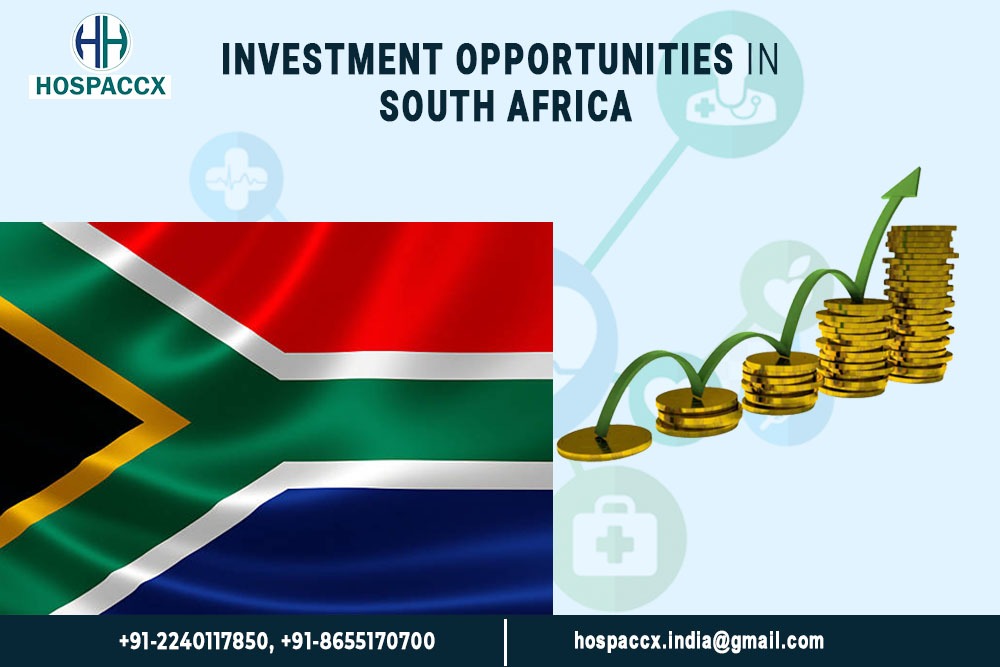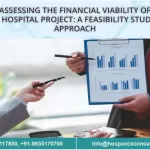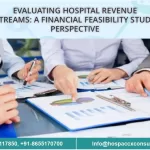INVESTMENT OPPORTUNITIES IN SOUTH AFRICA
INTRODUCTION
As global health systems failed to cope with the problems posed by the Covid-19 epidemic, Government realized that strengthening and investing in national health systems was essential to guarantee future economic stability
Sub-Saharan Africa accounts for 24% of financial and human expenses of disease worldwide. Africa is home to nearly half of all under-five fatalities worldwide. Although substantial, this obstacle is not impossible. There is a huge opportunity to use the private sector to boost the finance, quality, and accessibility of health care products and services across Africa. The private sector is already a major player in an area where government resources are scarce. About 60% of the money used to fund health care in Africa originates from private sources, and 50% of all health spending is spent on private providers. The vast majority of the region’s poor people, both urban and rural, rely on private health care.
HEALTH EXPENDITURE
Health expenditure is expected to increase by 0.8% per year, from R58.1 billion in 2020/21 to R59.4 billion in 2023/24. A budget of R62.5 billion for the Department of Health for 2021/22. In fact, Africa’s health care sector would be worth an estimated $259 billion by 2030. Overall, approximately 10 % of Africa’s health care expenditure is financed directly by donor aid.
Investment opportunities include:
- Manufacturing and supply of medicinal drugs for diseases such as HIV/AIDS, malaria, cancer, tuberculosis, diabetes and other lifestyle diseases.
- Development and manufacturing of active pharmaceutical ingredients.
- Development and manufacturing of generics.
- Supply of tele-medical applications.
- Servicing and maintenance of medical devices.
- Biotechnology and nanotechnology.
- Supply of niche pharmaceuticals such as alternative healing methods.
- Manufacturing of biological-based drugs and bio-therapeutics.
- Manufacturing of medical consumables.
- Development and supply of innovative medical technology.
DRIVING FACTORS TO INVEST INTO THE HEALTHCARE INDUSTRY
Medical Infrastructure
South Africa has one of the most active healthcare systems in the world, with a two-tier structure that includes both the public sector and the quickly expanding private sector. In South Africa, where there are 400 public hospitals and 200 private hospitals, the entire healthcare industry is expected to grow to US$37 billion by 2022 and US$47.1 billion by 2027.
R20.6 billion has been committed to the MTEF for the renovation of healthcare facilities in order to achieve parity between the quality of public and private infrastructure through the Infrastructure Refurbishment Programme. 10 hospitals have been finished, replaced, or refurbished between Q3 of 2014 and Q3 of 2020/21. A total of 1232 facilities have been restored, remodelled, or rehabilitated, in addition to the 151 CHCs and clinics that have been built or replaced.
The National Health Insurance Indirect Grant: Health Facility Revitalization Component (also known as “In Kind”) grants and the Health Facilities Revitalization Grant-Direct grant (HFRG) have been the major financial contributors to these accomplishments with the encouragement of public-private partnerships to facilitate alternative infrastructure investment models.
Health Insurance
Regardless of socioeconomic level, all South Africans will have access to high-quality, reasonably priced personal health care through the National Health Insurance (NHI), a system of health funding. NHI aims to prevent people and their families from experiencing financial hardship as a result of using healthcare services. NHI aims to provide all South Africans with universal health coverage.
This implies that everyone in South Africa will have the right to free point-of-use access to complete healthcare services at licensed healthcare institutions, including clinics, hospitals, and private health practitioners. An NHI card will be used for this. The services will be provided near people’s homes or work.
The NHI is being implemented over a 14-year period, beginning in 2012, in stages. The NHI will be funded by a combination of several required pre-payment sources, mostly based on general taxes, and will be implemented through the formation of a single fund that will purchase services on behalf of the whole population.
Medical Tourism
The world-class private healthcare system in South Africa has allowed for the creation of synergies for the expansion of medical tourism in the country. According to Hadi, the majority of medical tourism’s clients were from wealthy nations such as, the United States, Canada, the United Kingdom, and Australia.
The implementation of Special Economic Zones (SEZ) in South Africa can increase private investments in healthcare. South Africa focused on ensuring that it derives the most positive effects possible from health tourism while minimising its detrimental effects on the destination region. Health tourism source markets are similar to the international source markets for South Africa.
Pharmaceuticals and Medical equipment
The pharmaceutical and medical device industries in South Africa are the biggest and most developed in sub-Saharan Africa. Government funding has been concentrated on initiatives that assist and promote indigenous R&D and manufacturing. Through a number of incentive programmes, the South African government and industry stakeholders consistently assist the pharmaceutical and medical device sectors. Sales of pharmaceuticals and medical devices are estimated to reach R48 billion and R19 billion, respectively, in 2022 after more than doubling in the previous ten years. In the following five years, pharmaceutical revenues are expected to rise by nearly 40%. A rise in lifestyle-related illnesses, such as cancer, diabetes, obesity, and hypertension, contributes to this.
Low-cost generic medications, which make up about 40% of the pharmaceutical industry, have witnessed a sharp rise in sales recently as a result of policy-driven preferences. With sales increasing twice as quickly as those of patented medicines, generics will continue to be the category with the highest growth. By 2027, it’s anticipated that generic medication sales will surpass sales of the patented medicines.
Within medical device sales, consumables and diagnostic imaging devices are the largest segments. The medical device market is expected to grow at a CAGR of 8.97 % during the forecasting period from 2018 to 2024 due to public-private partnerships for developing hospitals, supporting government new health insurance schemes and the growing ageing population.
Companies in the pharmaceutical and medical device industries are anticipated to gain access for African market, thanks to the African Continental Free Trade Area (AFCFTA). South Africa’s high dependency on imported pharmaceuticals and medical devices combined with strong market growth provides attractive opportunities for investors to onshore production of pharmaceuticals and medical equipment.
Conclusion
Historically, the private sector has maintained the belief that the health industry in Africa does not offer a viable investment choice because of the inability to pay for treatments. But if we look at the majority of the continent’s countries today, we can see that things are changing as a result of the rise of a growing middle class and the quickening rate of urbanisation. This means that the scope of demand has widened and is no longer restricted to just basic, affordable healthcare. There are other more value chain components to take into account, including shifting toward medical wellness, which offers enormous opportunities in Africa.
For more information about the Country and Healthcare opportunities in South Africa, you can visit the company website on www.hospaccxconsulting.com or contact us directly.
Related Team Members










